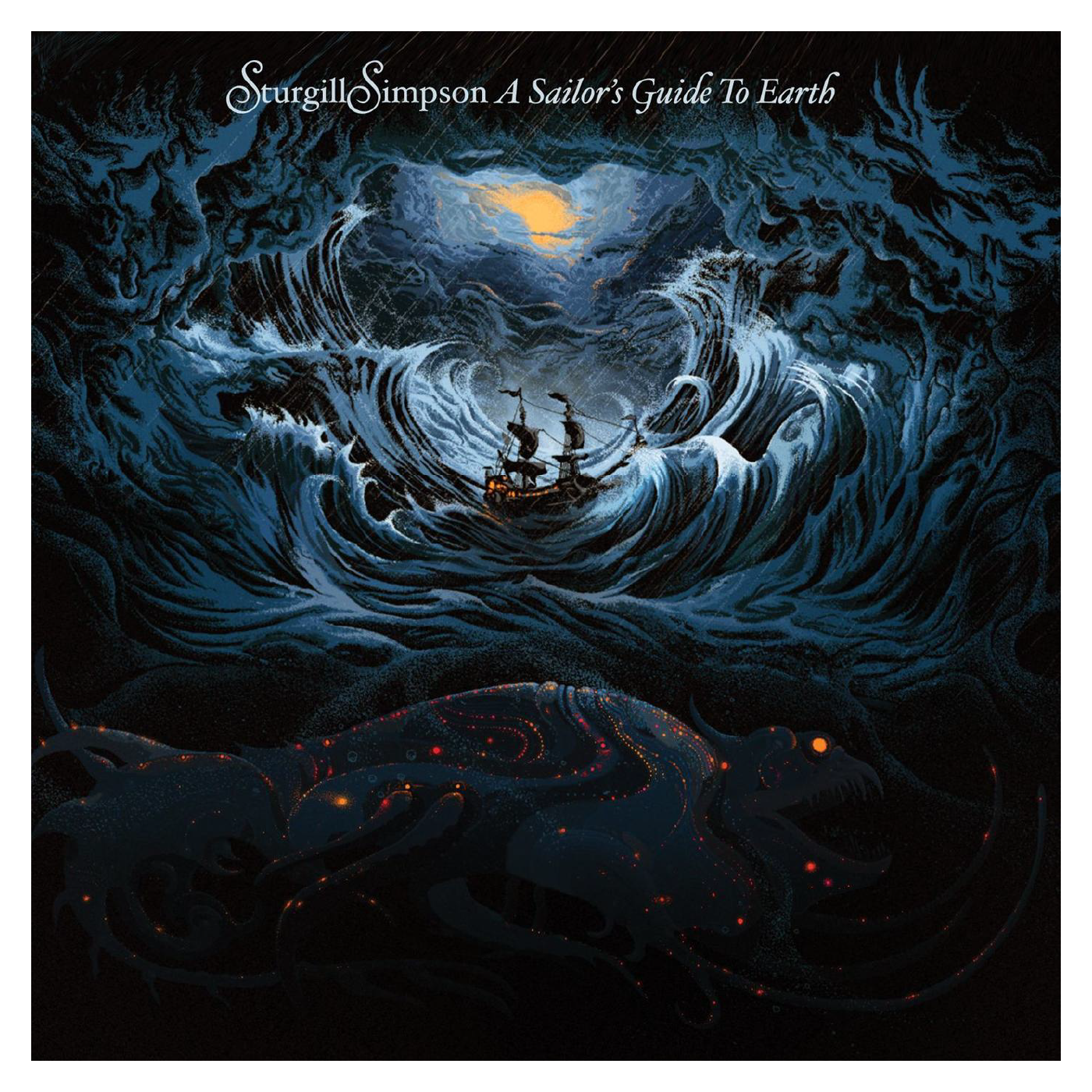Retro Review: Sturgill Simpson – A Sailor’s Guide to Earth
was an early and ardent fan of Sturgill Simpson. He was at the forefront of a traditional country revival that now seems quaint, with many artists following his lead. But, when Sturgill’s breakthrough album Metamodern Sounds in County Music was released, there really wasn’t much in the way of traditional country music that had made it into the zeitgeist. Sturgill hooked me from the first listen as he worked psychedelic sounds and existential questions into a classic country framework. He had managed to create an album that appealed to modern pop-country fans, traditional country fans, alt-country fans, and even indie rock fans. His shows were a melange of people from the city to the suburbs to the holler as he became the vanguard of the country revival (a responsibility I’m not sure he ever really wanted or enjoyed). To say the follow-up to Metamodern Sounds was highly anticipated would be an understatement.
His shows were a melange of people from the city to the suburbs to the holler as he became the vanguard of the country revival (a responsibility I’m not sure he ever really wanted or enjoyed).A Sailor’s Guide to Earth is a stylistic departure from Metamodern Sounds. It still has some traditional country sounds at its core, but the sparse piano and swelling strings on the first half of “Welcome to Earth (Polywog)” have more in common with the 80s and 90s country ballads than with Merle Haggard. “Welcome to Earth (Polywog)” then takes an unexpected turn into Memphis blues for the last half of the song, preparing users for a different experience than they may have expected on this follow-up.
HIGHLIGHTS
“Keep it Between the Lines” is an energetic song about a father (ostensibly Sturgill) wanting his son learn from his mistakes, but it doesn’t sound like he actually regrets many of those mistakes. It’s an interesting juxtaposition of looking back fondly on the craziness of his youth, but also wanting to keep his son safe from the dangers that usually accompany drugs and debauchery.
“Brace for Impace (Live a Little)” shares a different side of the advice that “Keep it Between the Lines” delivered, telling his son to “go on live a little” and that life’s to short to not leave it all on the field.
In “Oh Sarah” Sturgil pens my favorite line from the whole record, “So forgive me if sometimes I seem a little crazy, But goddamn, sometimes crazy’s how I feel.” Same, Sturgill. Same.
The final song on the album, “Call to Arms” is a raucous song railing against the interventionist military policies and the bravado that comes with that style of patriotism. I disagree with the last sentiment that we should all just turn off our TVs and Turn off the news. The solution is not to just ignore the disinformation and distraction, but to call it out and demand better from the media and do more to educate ourselves on media literacy.

There aren’t really any full-on lowlights on the album, just a few lulls in excitement. First of which is the cover of Nirvana’s “In Bloom. “Fans of our podcast may know that I have strong opinions on covers, especially of already iconic songs. I’m a big fan of Nirvana and it’s certainly a ballsy choice to rework one of their songs. I was unsure how I felt about the cover at the time, but these days, I think this would be a song I would skip. I don’t hate it, but I just feel that I’d rather listen to the original.
The one thing that kept sticking out to me, though, was the country twang Sturgill often puts on his voice. With this album being much less traditional country, it often feels out of place and strange in the new soundscape.

HOW DOES IT HOLD UP?
I was skeptical that this album would hold up well as I had rarely felt compelled to revisit it after the newness wore off, but was surprised how much I actually enjoyed of the album. Do I think I’ll come back to it regularly? Probably not, but I did add a few songs back to my “liked songs” on Spotify, so they may eventually show up on an episode of Hi-5: Shuffle. As a complete album, I found it a bit uneven and didn’t connect with it the way I did 7 years ago when it came out. There’s still some great moments, but it feels a bit dated to me now.
WHERE ARE THEY NOW?
Since the release of Sailor’s Guide to Earth, Sturgill has released 4 studio albums that are wildly different stylistically and collaborated with a ton of artists like Angel Olsen, Diplo, Willie Nelson and more. He’s a tough artist to pin down and I imagine he likes it that way.
Simpson has said that The Ballad of Dood and Juanita is his last solo album, saying “Going forward, I’d like to form a proper band with some people who I really love and respect musically, and be a part of something truly democratic in terms of creativity.” I, for one, am looking forward to seeing how Sturgill continues to grow and confound expectations.
Musician, concert photographer, writer, podcast host and founder of The Hot Mic Music Magazine.
-
Brian Bruemmerhttps://thehotmic.co/author/brian-bruemmer/
-
Brian Bruemmerhttps://thehotmic.co/author/brian-bruemmer/
-
Brian Bruemmerhttps://thehotmic.co/author/brian-bruemmer/
-
Brian Bruemmerhttps://thehotmic.co/author/brian-bruemmer/





